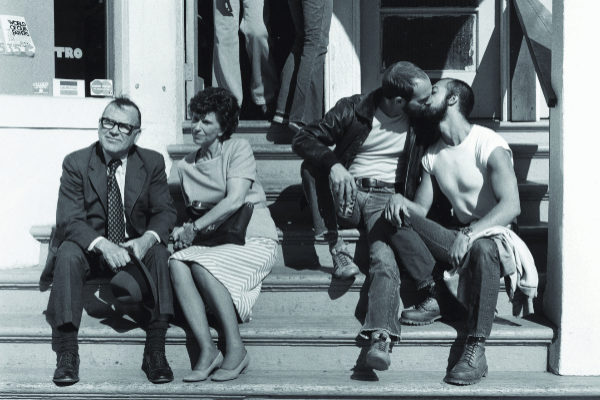In the 80s, one Dorothy brought the US Navy's NCIS (Naval Criminal Investigation Service) upside down. They investigated homosexuality in Chicago and thought that this mysterious woman was at the center of a gay circle within military personnel , since homosexuals sometimes referred to themselves as "Dorothy's friends" (in English, abbreviated FOD).
The term was a code for male homosexuality, which was coined in the 40s, and its origin could be the film The Wizard of Oz (1939), where Judy Garland, who played Dorothy, became a gay icon. "Dorothy's friend" and "Mary" functioned as codes to be able to talk about his personal or sexual life without problem - so, it wouldn't sound weird to hear a man say "I've had a date with Mary" -. Mythical codes and references to camouflage before strangers.
The painting A friend of Dorothy , 1943, created in 1986 by David McDermott and Peter McGough, reflects various words that served as insult (queen, fairy, fag ...) on a yellow background in which the word "Mary" stands out in red. ": the code with which homosexuals were called against the insults that were used to name them.
It is one of the 250 works among paintings, photographs, murals and activist posters that collects the book Art & Queer Culture . Coinciding with the 50th anniversary of the Stonewall riots, Phaidon publishing house has published a revised and updated edition of its historical study on queer culture over the past 130 years . With essays by Richard Meyer and Catherine Lord, he adds a chapter entitled Here and Now , which highlights the new visibility of nonconformist artists in the field of gender.
The book exposes only one work per artist, regardless of whether it is the most important in his career or whether or not they have a broad artistic career. It includes figures known as Francis Bacon, Catherine Opie and Félix González-Torres, but also less famous artists such as Celeste Dupuy Spencer, Lola Flash and Jim Chuchu. Consecrated and underground names; works exhibited openly under the signature of the fine arts and others restricted or intended for private audiences.
Although the term queer is modern - understanding the term as that which challenges cisterosexual heteronormativity - its meaning extends much further back in time. From Oscar Wilde and his Portrait of Dorian Gray to Susan Sontag and his Notes on 'Camp' , passing through the Molly House of 18th century London or the Harlem drag balls in the 20s, the refusal to social and sexual norms has fueled the creation of queer art from the entire modern period.
Meyer and Lord divide the work into two halves - Meyer takes care of the period between 1885 and 1980 and Lord from 1980 to the present day - for a practical matter: there is as much queer art and culture in the last 30 years as in the previous century . In that journey, the authors explain the different moments that the gay movement is going through, in which the works are framed.
The decade of the 50 is considered the most conservative politically and expressly homophobic of the s. XX , with repressive measures such as blacklists or arrests, which led to a more organized response from queer cultural producers. These groups laid the foundations for what would come in the 60-70s, an activist culture with the formation of links between the radical social movements of the time: pacifism, feminism and black power .
The gay movement soon became international. The 80s were marked by AIDS , which the group was blamed at first until cases were known among heterosexuals. The image that was transmitted of people with AIDS was dying and emaciated and the challenge of queer artists - many of them HIV-positive or friends / lovers of those who were - was to create empathic and positive representations. In Spain there was silence until the 90s, when the performance sculptor and artist Pepe Espaliú, sick with AIDS, planted a seed of visibility for people with AIDS in our country: with his Carrying Project , he organized friends and acquaintances to carry him by The streets of Madrid.
Much more friendly for the LGTBIQ community and, therefore, for queer art, it has been the 2000s, where transgender people have become visible . But let's not forget that this work focuses on Anglophone and European artists. In many parts of the world where homosexuality remains a crime, queer art may continue to pull "Mary" codes to express itself with some freedom.
According to the criteria of The Trust Project
Know more- LGTBI
Special 30th Anniversary of EL MUNDOCellnex: a new solution to track merchandise
Specials 30th Anniversary of THE WORLD Always be prepared for an impending attack, the key to survival
SPECIAL 30th anniversary of the world The car of the future will be autonomous, connected, efficient and collective

